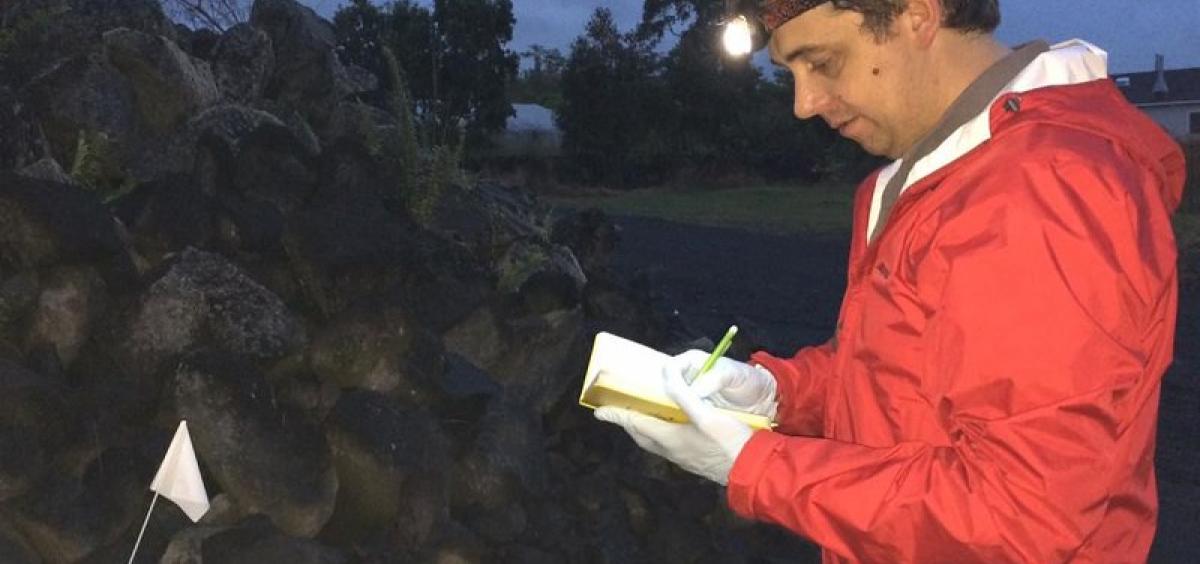
CORVALLIS, Ore. – New research from Oregon State University Extension Service found slugs and snails are strongly attracted to bread dough, a discovery that could lead to better ways of controlling these serious pests of agriculture, nurseries and home gardens.
Since the beginning of recorded history, slugs have ravaged crops and today are responsible for billions of dollars in damage – including between $60-$100 million to Oregon’s valuable grass seed industry alone, according to Rory Mc Donnell, associate professor and Extension gastropod specialist.
“Damage to grass seed is a major issue,” said Mc Donnell, who collaborated with scientists from other states on a study that was published in a special issue of Insects that focuses on slugs and snails. “But that’s just one crop. It’s mind boggling when you think about it. A huge array of crops is affected. They even take out specialty crops like mint. Many times, I’ve seen farmers lose an entire crop.”
Currently, nurseries, farmers and home gardeners use commercial baits like metaldehyde, iron phosphate or sodium ferric EDTA to control slugs and snails. These molluscicides are relatively expensive, can be toxic to non-targets and work with varying degrees of success, Mc Donnell said. Given its simplicity, low cost and the ready availability of its ingredients, bread dough has potential not only for crop protection in the United States but also for developing countries where access to pesticides is limited by cost. A dry formulation would likely have an indefinite shelf life and be easy to ship. It can be used to attract the slugs to a trap, where they will die, or to attract them to a molluscicides.
“Bread dough is a nontoxic, generic and effective tool that could be used in the detection and management of gastropods worldwide,” Mc Donnell said. “It represents a tool to aid in managing pest gastropod infestations, either using baited traps or in attract-and-kill approaches. It could also be incorporated into existing baits to improve their attractiveness.”
Of the 28 exotic or non-native slug and snail species in Oregon two are particularly troublesome – European brown garden snails (Cornu aspersum) and gray field slugs (Deroceras reticulatum), which plague nurseries and feed on hundreds of important crops with significant financial cost. If European brown garden snails are found in shipments of Oregon nursery plants at ports of entry in other states, the items are either shipped back or treated in place, Mc Donnell said. Either way it’s expensive.
“With worldwide trade and travel, we are getting a homogenization of slugs and snails on planet Earth because of the widespread introduction of species,” Mc Donnell said. “This is not just a modern phenomenon. Slugs and snails have been traveling with humans for thousands of years. But it’s getting more severe because of purposeful introductions, global trade, intensification of agriculture and development of new crops.”
Mc Donnell and his collaborators haven’t determined yet why bread dough – a simple mixture of flour, water and yeast – attracts slugs and snails, but theorize that it is the fermentation process that draws them. They used a range of food in addition to bread dough to determine which would be the most attractive bait, including beer, cucumber, lettuce, strawberries, citrus, tomatoes, hostas and Marmite (a yeast-based food product popular in Great Britain).
“We gave them a choice of food and they consistently went for the bread dough,” Mc Donnell said. “They really, really like it. They went bonkers for it. Bread dough outperformed everything.”
In one instance, over 18,000 snails were trapped in 48 hours, according to Mc Donnell. The research revealed the bread dough can be effective in the field in Oregon for at least eight days.
“It has something we call ‘good field life,’” Mc Donnell said. “That’s really, really important. If it worked for 12 hours, that would be good, but eight days gives a much bigger window for use.”
The project was a collaboration between Mc Donnell and his team; Robin Veasey and Jocelyn Millar, University of California at Riverside; Arnold Hara, University of Hawaii at Hilo; Amy Roda, U.S. Department of Agriculture, Miami; Gary Adams, U.S. Department of Agriculture, Billings, Mont.; and Ian Foley, Montana Department of Agriculture. This work was supported by funding from the U.S. Department of Agriculture under the Plant Protection Act Section 7721.
About the OSU Extension Service: The Oregon State University Extension Service shares research-based knowledge with people and communities in Oregon’s 36 counties. OSU Extension addresses issues that matter to urban and rural Oregonians. OSU Extension’s partnerships and programs contribute to a healthy, prosperous and sustainable future for Oregon.
Kym Pokorny, 541-737-3380, [email protected]
Rory Mc Donnell, 541-737-6146, [email protected]
Click photos to see a full-size version. Right click and save image to download.